June is a good time to evaluate your lawns for areas where turf may be better off replaced by groundcovers. Mowing season is in full swing since warm-season grasses are growing like gangbusters; but if your turf is declining or just plain bare in spots, it could be due to too much shade created by the tree canopies above. Groundcovers can fill in those exposed areas that otherwise might get overrun with weeds. And since many groundcovers are evergreen and pretty low maintenance, these make an excellent fill in for turf-challenged areas.
While the cool, fall, weather in October makes for ideal planting conditions for groundcovers, if you just can’t wait until fall, shady area groundcovers can still be planted in June as long as you can make sure they are well watered throughout the rest of summer. Shaded areas in the landscape are less stressful during summer heat than sunny areas, so while we have listed groundcovers for multiple sun exposures, it’s not recommended to plant groundcovers now in your sunny areas. Mulching the shady areas you do plant in, will help with moisture retention which will boost your success in planting during the heat.
Below are a few ideas for plants you can use as groundcovers. Groundcovers don’t always have to be low-growing. Big ferns can make a shady haven in your landscape and agapanthus can make a striking focal point in a shady area that might otherwise be drab. Do some research on the following plants, or check out our plant finder tool, and then bring in your wish list so we can show you where to find the plants at Rainbow Gardens.


We love using liriope as groundcovers. They are suitable for multiple sun exposures in the landscape.
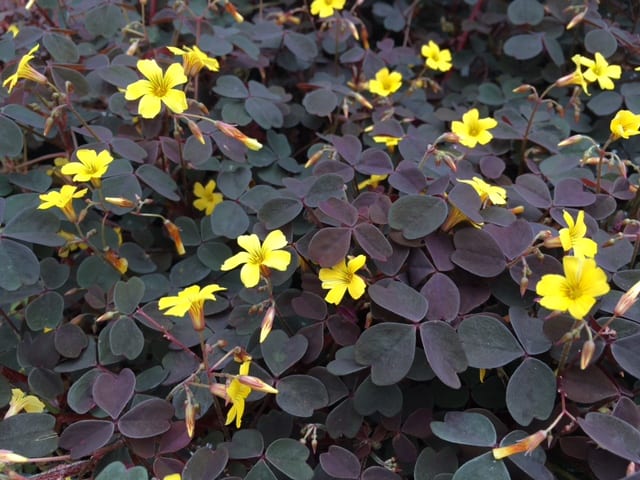

Oxalis is a beautiful plant you can incorporate into your shady groundcover selections
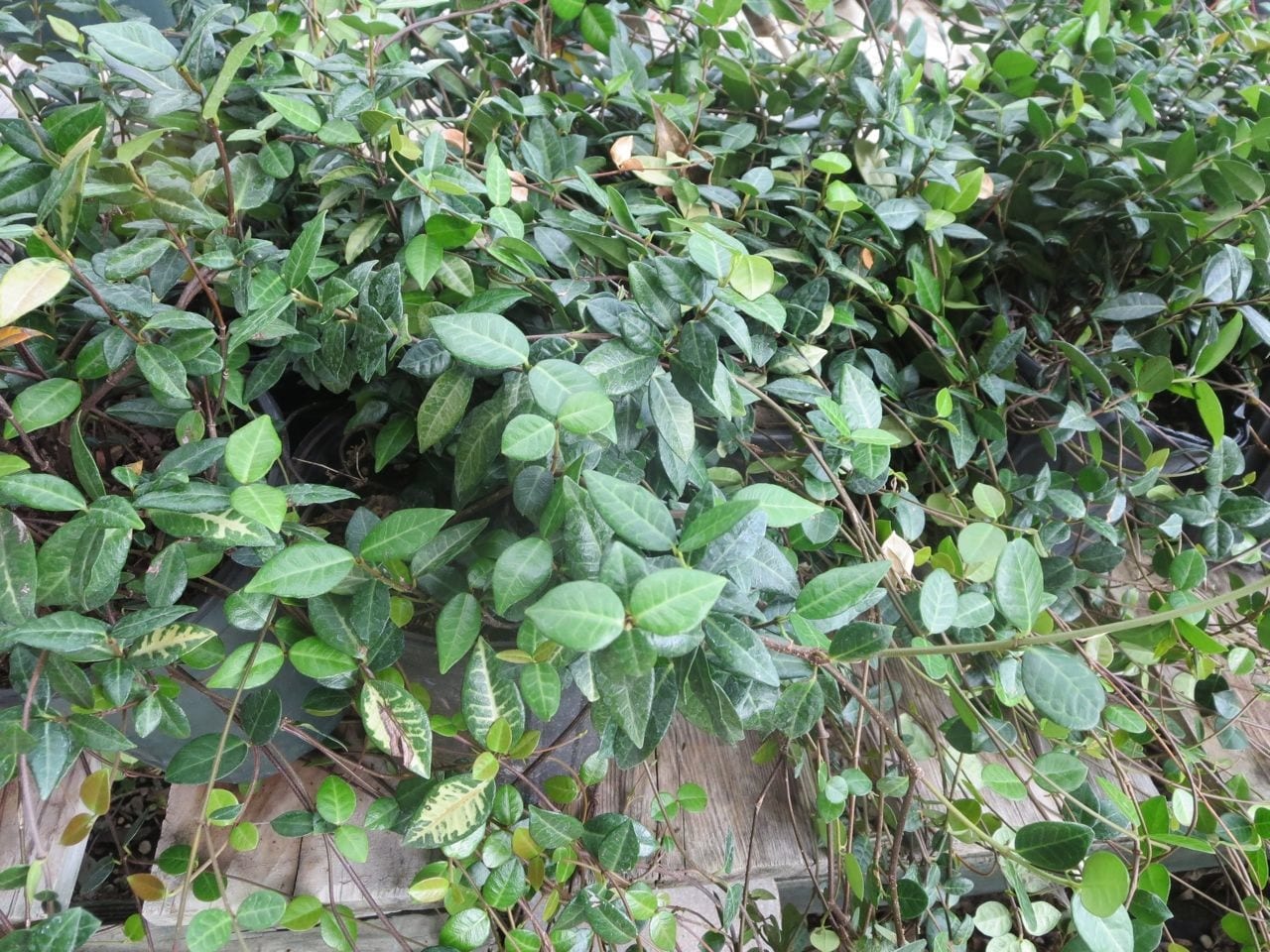

Asiatic Jasmine makes a great, easy-maintenance, groundcover and comes in multiple varieties. Shown is “Salsa”.
Deep shade groundcovers we love (full shade, all day):
- Asiatic Jasmine
- Mondo or Monkey grass
- All Lilyturf
- Blue Shade (Ruellia)
- Cast Iron Plants
- Oxalis
- Japanese Ardisia
- Lily of the Valley
- Fig Ivy
- English Ivy
- Carolina Jessamine
- Gingers
- Chocolate Soldiers
- Vinca Major
- Many Fern varieties
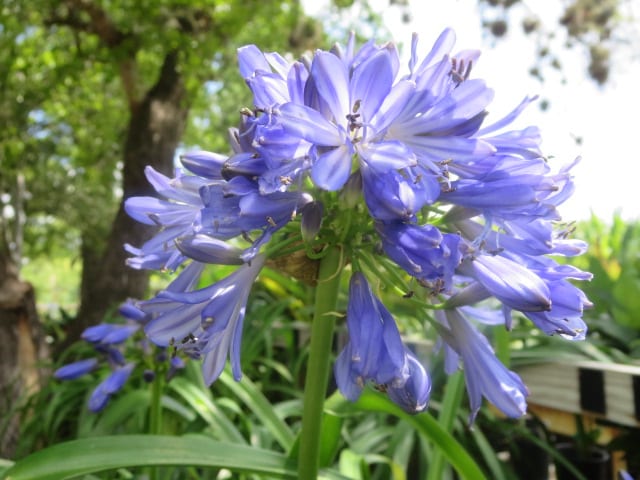

Lily of the Nile, also called Agapanthus, are ground covers with tall, gorgeous, blue flower spikes.
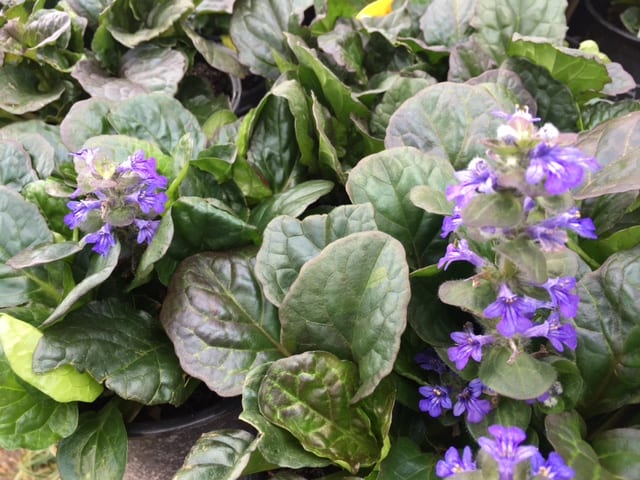

Ajuga are low-growing groundcovers with glossy leaves and spiked flowers, perfect for morning sun afternoon shade areas.
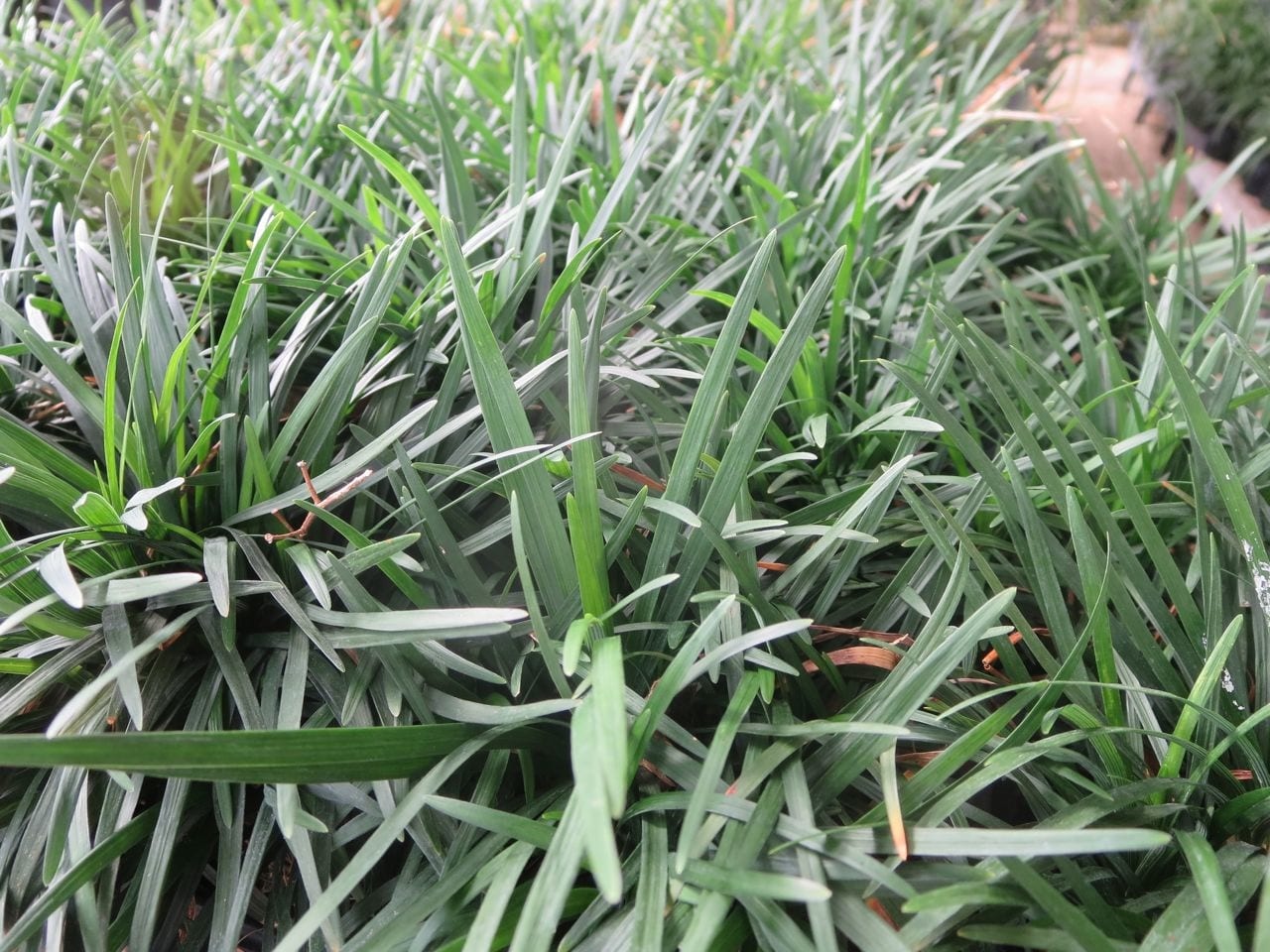

Mondo grasses are clumping groundcovers that look great underneath trees or alongside walkways.
Light to medium shade groundcovers we love (morning sun/afternoon shade):
- Ajuga
- Ardisia
- Asparagus fern
- Horseherb
- Dwarf Plumbago
- Creeping Fig
- Hosta
- Liriope
- Creeping Jenny
- Silver Ponyfoot
- Blue Star Creeper
- Mondo grass
- Pigeonberry
- Vinca minor and major
- Wedelia
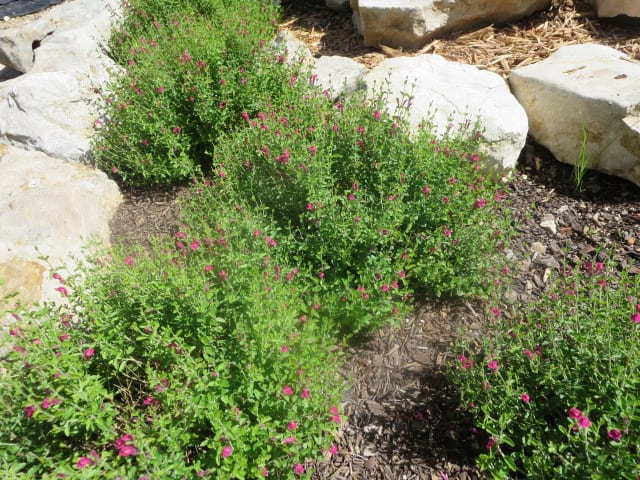

Skullcap, while situated in our perennial section, also makes a nice mounding groundcover that is virtually maintenance-free.
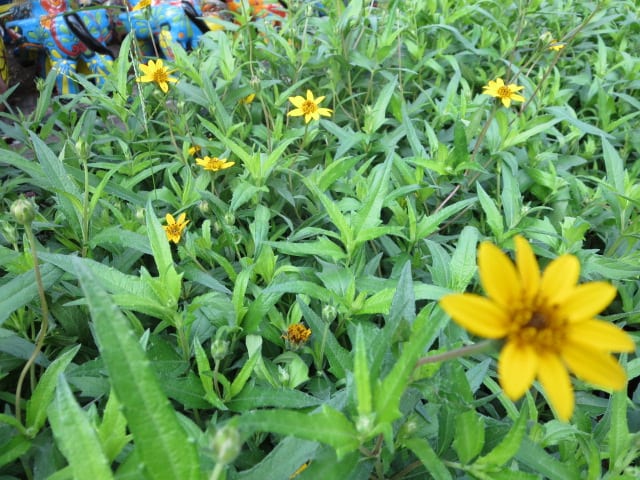

Zexmenia is a hardy, drought-tolerant groundcover that is perfect for our the sunshine that San Antonio summers blasts out.
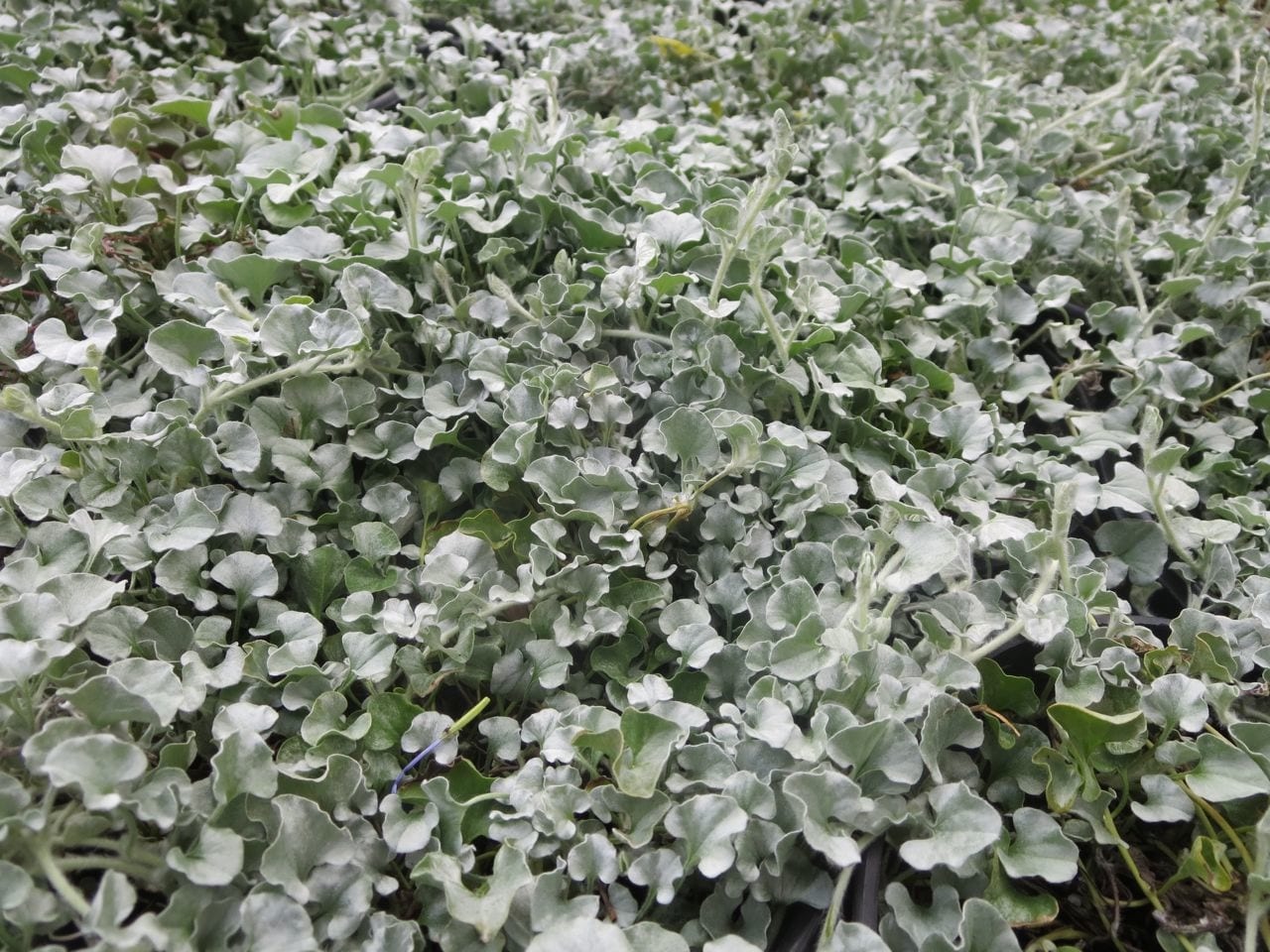

You’ll find Silver Ponyfoot growing as groundcovers in medians of shopping centers all over San Antonio. The silver foliage is stunning.
Sun loving groundcovers we love (full on Texas sun in the afternoon):
- Compact Gold Calylophus
- Creeping Jenny
- Barberry Cotoneaster
- Wintercreeper
- Daylily
- Four-Nerve Daisy
- Winecups
- Frogfruit
- Trailing Lantana
- Creeping Junipers
- Creeping Phlox
- Pink Skullcap
- Silver Ponyfoot
- Liriope
- Prostrate Rosemary
- California Iceplant
- Blackfoot Daisy
- Wooly Stemodia
- Sedum
- Society Garlic
- Verbena (trailing and moss)
- Zexmenia
- Wedelia
Tips for Planting Groundcovers Under Trees
Remove all weeds and turf from area to be planted.
- Loosen soil using s turning fork to lessen disturbance of roots under trees. Try to avoid severing any roots larger than an inch in diameter if possible.
- Mix in 3-4 inches of organic matter (compost, peat moss, etc…) into your native soil to make a suitable bed for your groundcovers.
- -Plant as deep as soil balls are tall, and water thoroughly (adding a little root stimulator helps your groundcovers get established)
- Apply at least 3” of mulch and keep area well-watered throughout summer, especially during times of drought.
~The Happy Gardener


Is Algerian Ivy or purple wintercreeper good for ground cover in San Antonio part sun
Sure, those are both good options for groundcovers in part sun/shade. Make sure you have well-draining soil if you choose purple wintercreeper as it doesn’t tolerate wet feet well.
What is a good walkable, drought tolerant ground cover for full sun in this area other than sedum and California ice plant? I had vinca minor in California as well as oregano and chamomile. Wanting low maintenance but still good for pets.
Thks 4 the chingos of info, which is a bit overwhelming n would b easier to process if the plant lists were in alphabetical ordere
Thank you, Rob, will keep that in mind.
I want to replace my dead backyard lawn with low growing hardy and play- on-able, pet using ground cover. I do not want to have to mow it and I don’t want it to be sharp dead sticks in the winter. What can I replace the lawn with? Normal San Antonio weather and watering restrictions. Some full shade some full sun.
Hi Sally,
Those are a lot of different variables for groundcover requirements that could make it difficult to find the perfect groundcover that will work for you. I would take a look at frogfruit because it can handle the different light requirements having both shade and sun. However, if we have a cold winter, it could go dormant. Frogfruit would still need to be watered to maintain it as a groundcover. Wedelia is another somewhat low-growing plant you could use as a groundcover.
Howdy, and thanks for the awesome list. Can’t wait to dig into the different varieties. I am curious, however, if Dwarf Carpet of Stars grows well in San Antonio. It keeps popping up in my searches for lawn alternatives and looks pretty awesome. Any information would be appreciated. Thanks.
Hi Tony,
I don’t really know much about this groundcover. I’m sorry I can’t help you with this one. It hasn’t been one on any of our radars, so we cannot give it a thumbs up at this point.